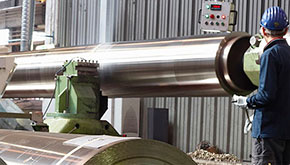
In the intricate land of fluid transportation systems, the significance of pipe fittings cannot be overstated. These connectors play a crucial role in ensuring the smooth flow of liquids or gases through pipelines. Selecting the right pipe fittings from reputable fittings supplier in UAE involves a nuanced understanding of various factors to guarantee compatibility, durability, and efficiency within the system. This guide provides essential tips for understanding the vast array of options and choosing the ideal pipe fittings for your specific requirements.
Material compatibility:
The foundation of selecting the right pipe fittings lies in understanding the materials involved. Matching the material of the fittings to that of the pipes is critical for preventing corrosion, leaks, and other forms of deterioration. Common materials for pipe fittings include stainless steel, brass, copper, and PVC, each offering distinct advantages based on factors such as chemical resistance and durability.
Fitting type and functionality:
Pipe fittings come in an array of types, each serving a specific purpose in the fluid transportation system. Common types include elbows, tees, couplings, and reducers. Understanding the function of each fitting type and its compatibility with the system’s layout is essential. For instance, elbows facilitate directional changes, tees allow for branching, and couplings provide a secure connection between two pipes.
Size and dimensions:
Accurate sizing of pipe fittings is fundamental for maintaining efficient fluid flow within the system. Matching the fitting size to that of the pipes ensures a smooth connection, preventing bottlenecks or restrictions. Additionally, considering the dimensions of the fittings in relation to the available space in the installation area is crucial, particularly in confined or tight spaces.
Pressure and temperature ratings:
The operating conditions of the fluid transportation system dictate the pressure and temperature ratings required for the pipe fittings. It is imperative to select fittings that can withstand the specific pressures and temperatures encountered in the application. This consideration ensures safety and also contributes to the longevity and reliability of the entire system.
Corrosion resistance:
Corrosion poses a significant threat to the integrity of pipe fittings, particularly in environments with aggressive substances or varying pH levels. Opting for corrosion-resistant materials and coatings, such as galvanized steel or special alloys, enhances the durability of the fittings and prevents deterioration over time.